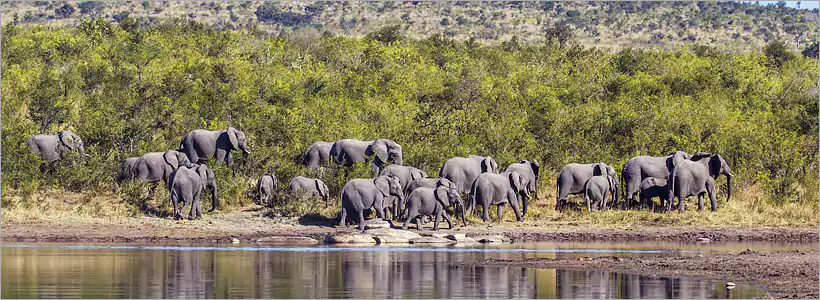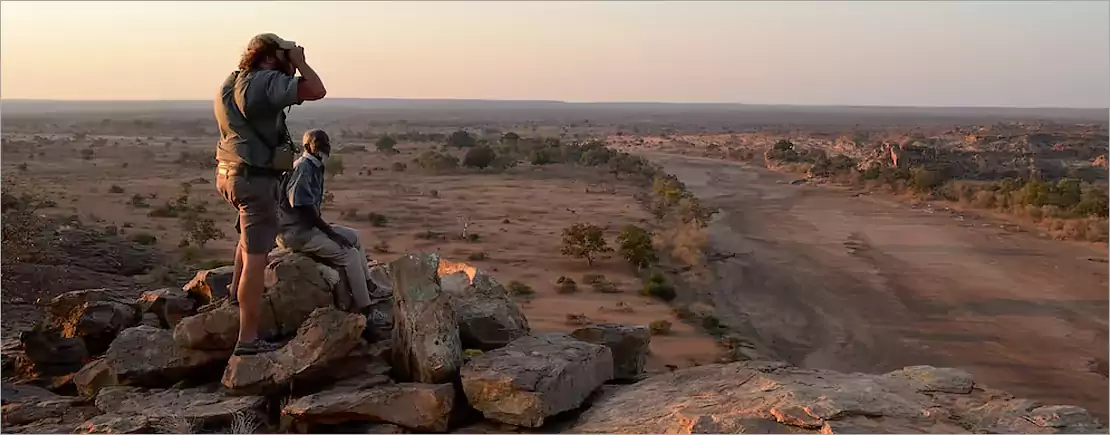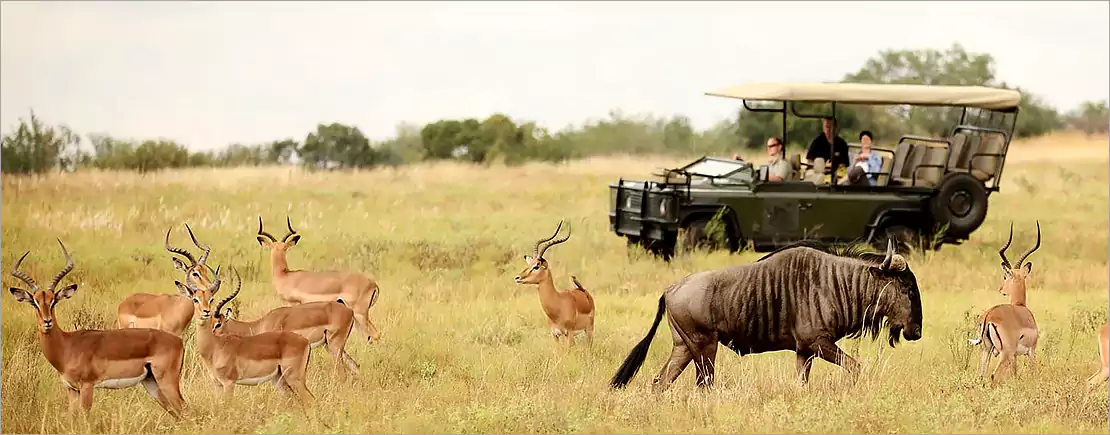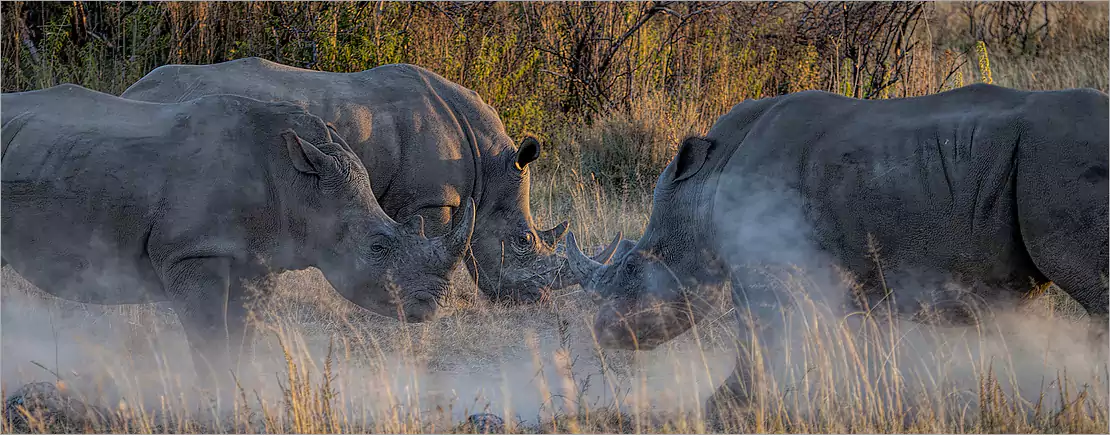Kruger Park Eco System
Kruger Park Eco System
The Kruger National Park ecosystem is made up of not one, but six different ecosystems that spread across the park. Each ecosystem depends on the type and age of the underlying rock. The rock in turn affects the type of topsoil that forms on the rocks.

The Kruger Park ecosystem - Where Diversity Abounds
The Kruger Park ecosystem
The Kruger National Park is a vast wilderness area that was established over 100 years ago, yet this conservation area is still expanding to include private protected areas and National Parks in neighbouring countries. The Kruger National Park ecosystem is made up of not one, but six different ecosystems that spread across the park.
Conserving Africa’s large carnivores and mega-herbivores requires space.
Lots of space. Not just any space will do – lions, wild dogs, elephants, and rhinos (to name a few) need large amounts of food, which for the carnivores means many different prey species that in turn rely on grasses and trees, as do the big herbivores. These plants and mammals form part of a larger ecosystem, which includes hosts of birds, fish, reptiles, and amphibians. Unfortunately, the largest animals are considered a threat to human lives or their livestock and crops, which means that the ideal space to set aside for them is separate from villages and farmlands.
The requirements of these species is both a conservation challenge and an opportunity. The challenge lies in setting aside large enough space for these animals, on a continent where the human population is expected to double by 2050.
Yet if we meet the challenge of conserving our large carnivores and herbivores, we will have an amazing opportunity to conserve the many other plant and animal species that live in these conservation areas.
But how can we even dream of protecting large expanses of land for wildlife in a country like South Africa, where population growth, coupled with poverty and unemployment, drives the demand for land to support local livelihoods and economic growth?
Private landowners neighbouring the government-managed Kruger National Park saw an opportunity to replicate this success by establishing their own game reserves bordering the reserve. These private reserve owners demonstrated their commitment to conserving the wildlife on their properties by reducing poaching and providing neighbouring communities with much-needed jobs.
However, the true value of these new neighbours was only fully realised after the groundbreaking decision to drop the fence that was preventing animal movement between the National Park and the Sabi Sand Reserve in 1993. This was followed by a similar agreement with the Associated Private Nature Reserves, an umbrella body that represents five private reserves adjacent to the Kruger that dropped their fences during the period 1993-2010.

The Kruger Park ecosystem - Where Diversity Abounds
The private nature reserves, along with three other areas owned by local communities, added an extra area the size of 330,000 football pitches to the Kruger, thus forming what is now known as the Greater Kruger National Park, also known as the Greater Kruger.
In another exciting development, the Greater Kruger in South Africa now links and joins National Parks in Zimbabwe and Mozambique, forming the Greater Limpopo Transfrontier Park. This internationally protected area covers 3.5 million hectares – about the size of the Netherlands, or the State of Maine.
As the third largest protected area in Africa, it is recognised as a key area for the conservation of lions, elephants, African wild dogs, black and white rhinos, as well as providing habitat for another 143 mammal, 116 reptile, 49 fish, 34 frog, and over 500 bird species.

The Kruger Park ecosystem - Where Diversity Abounds
Each ecosystem depends on the type and age of the underlying rock. The rock in turn affects the type of topsoil that forms on the rocks.
Different types of topsoil support certain kinds of grasses, plants and trees. This greenery helps to prevent soil erosion.
Ultimately, the vegetation leads to which herbivore animals eat the flora and which predators hunt those herbivores
Don’t forget about the effects of wind either. It carves the shape of the landscape, such as wearing away rock to provide shelter and it carries the seeds of plants and grasses to new places to grow.
On top of this add rainfall, the rivers and the amount of water that stays in catchments like the small dams. Add to this the general Kruger National Park weather and climate. Hot humid days in summer and mild winter days with cool nights impact on what plants and animals will thrive in the area.
Add these all together and you get the main factors which contribute to the ecosystems in Kruger National Park.
The northern part of the park, above Olifants River, is mostly mopani veld which is a mixture of mopani trees growing above granite and basalt rock. South of this river, the ecosystem is mainly Lebombo knobthorn veld growing on dry volcanic rock ridges.
The four other ecosystems that exist in Kruger National Park are:
- Acacia thicket
- Baobab sandveld where the underlying rock is sandstone
- Combretum-silver clusterleaf woodland on granite rock
- Riverine forest where thick woods grow along riverbanks
Kruger National Park and ecotourism go together hand in hand. The variety in ecosystems supports the huge array of animals that thousands of people each year from all over the world come to see and enjoy.
Kruger National Park is the largest safari park in South Africa and is home to the Big Five as well as all of the country's large carnivores and boasts the largest populations of a number of game species including White and Black Rhino, Savanna Buffalo and Savanna Elephant.
The massive expanse of the Kruger National Park is home to over 147 species of mammals, 114 reptile species, 51 snake species, 49 fish species and a massive 508 species of birds, a number unrivalled anyway else in South Africa. Home to the Big Five of the African animal kingdom, the Kruger National Park is South Africa's largest conservation area, covering an expanse of 19 455km2.
Due to the enormous expanse of the game reserve, some species of wildlife favour certain areas where vegetation types differ. In the northern regions of the reserve visitors can expect to find Roan Antelope, Tsessebe, Common Eland and Savanna Elephant while in the southern and central regions visitors will usually find Plains Zebra, Impala, Southern Giraffe and Rhinoceros.
Buffalo are mostly found in the northern and central reaches of the safari park. Hippopotami can be found almost all of the permanent rivers and large pools that have water year-round.
Large carnivores, including Leopard, Lion, Cheetah and Wild Dog can be found roaming throughout the entire game reserve but are most commonly found near to large populations of other game. While both Black-backed Jackal and Side-striped Jackal are found in the region, Black-backed Jackal are the more commonly seen of the two. Bat-eared Foxes can be found north of the Letaba River in the open plains.

The Kruger Park ecosystem - Where Diversity Abounds
The Kruger National Park is home to all five of the primate species found within South Africa but the most commonly seen of the species are Savanna Baboon and Vervet Monkeys.
Nile crocodiles are regularly seen in the perennial rivers and on the banks of large pools and dams and visitors will also spot the small heads and backs of a number of different Terrapin species including Marsh and Black-bellied Hinged Terrapins popping up occasional in the water.
Of the 51 snake species the most dangerous to humans are Black Mambas, Mozambique Spitting Cobras, Snouted Cobras, Puff Adders and Boomslang (Tree Snakes).
Bird-watching is a popular activity while staying in the Kruger National Park and the park-run rest camps and the viewpoints at the numerous water holes and dams offer excellent vantage points from which to try to tick off a few sightings in your bird book.
While the park offers good bird-watching throughout, the most prolific locations include the area in and around the Pretoriuskop camp, the Lower Sabie camp, the Punda Maria camp and the Shingwedzi camp.
There are a number of bird species found within Kruger that are more highly numbered in the reserve than anywhere else in South Africa. These species include; Martial Eagles, Kori Bustards, South gound Hornbills and Bateleurs.
Out of the 6 species of Vultures found within the park, the most commonly seen are the Lappet-faced Vulture, Hooded Vulture and the White-backed Vulture. In summer time bird-watchers will regularly see Wahlberg's Eagles soaring above their heads.

The Kruger Park ecosystem - Where Diversity Abounds
REFERENCES - Kruger Park, Kruger National Park Guide, Conservation Africa.
